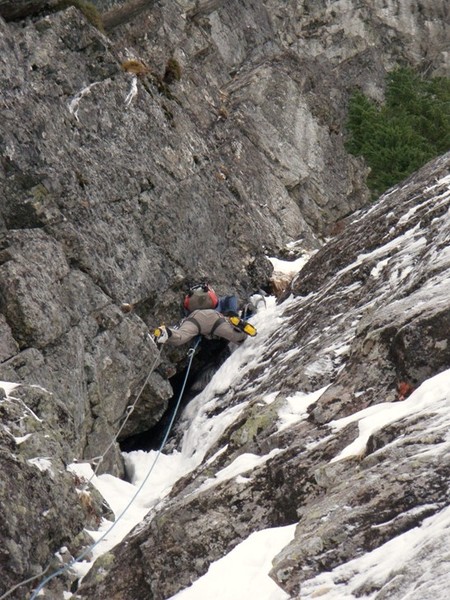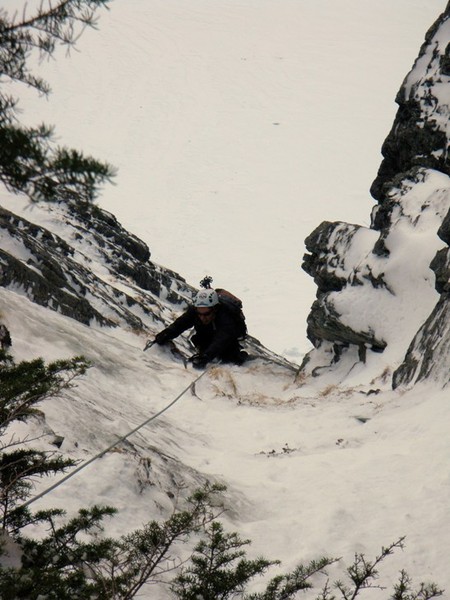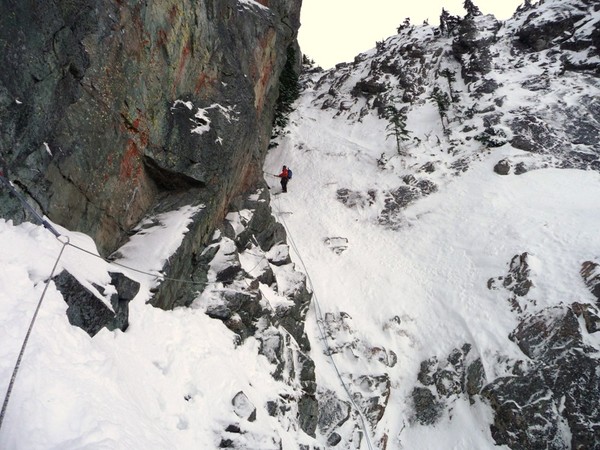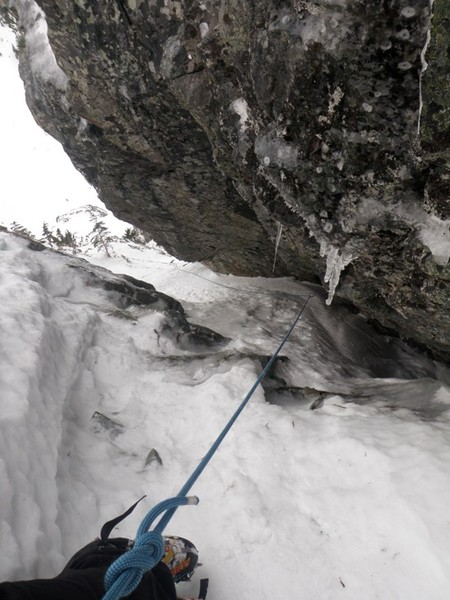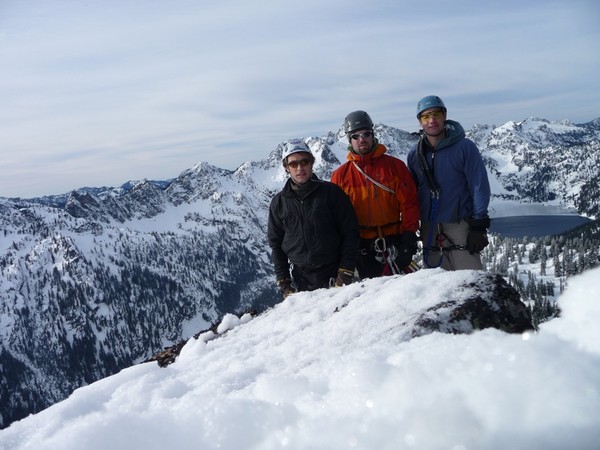 On Friday, December 11th, the American Alpine Institute will sponsor an event to benefit the purchase of the Lower Index Town Walls. This event will coincide with International Mountain Day and will be held in Bellingham at the YMCA and at New York Pizza. To read more about the event, click here.
On Friday, December 11th, the American Alpine Institute will sponsor an event to benefit the purchase of the Lower Index Town Walls. This event will coincide with International Mountain Day and will be held in Bellingham at the YMCA and at New York Pizza. To read more about the event, click here.
Monday, December 7, 2009
International Mountain Day - Index Benefit - Friday!
 On Friday, December 11th, the American Alpine Institute will sponsor an event to benefit the purchase of the Lower Index Town Walls. This event will coincide with International Mountain Day and will be held in Bellingham at the YMCA and at New York Pizza. To read more about the event, click here.
On Friday, December 11th, the American Alpine Institute will sponsor an event to benefit the purchase of the Lower Index Town Walls. This event will coincide with International Mountain Day and will be held in Bellingham at the YMCA and at New York Pizza. To read more about the event, click here.
Applications Open for 2010 Research Fellowships in Denali and other Alaska National Parks
AAI just received the following email from Denali National Park:
The National Park Service and the Murie Science and Learning Center (MSLC) are seeking applicants for two research fellowships that are available to individuals wishing to conduct research in Denali National Park and Preserve and other national parks in Alaska. The Discover Denali Research Fellowship is for research in or near Denali, and the Murie Science and Learning Center Fellowship is for research taking place in Denali or other arctic or subarctic Alaska national parks.
The Discover Denali and the MSLC Fellowship Programs are designed to assist undergraduate and graduate students, but may be appropriate for college and university faculty, state and federal agency scientists, and private-sector researchers. Proposals for research that will help managers make decisions about critical resource issues are particularly encouraged. A typical fellowship grant is expected to be around $3,000 – $3,500; however, proposals for up to $5,000 will be considered. If an applicant wants to be considered for both funding sources, only one application is needed.
The deadline for both fellowship applications is February 1, 2010 and a decision is expected to be made soon after March 1, 2010. The fieldwork of fellowship recipients must be arranged before September 1, 2010.
This is the third year that the Murie Science and Learning Center research funds will be available to researcher-applicants whose studies help managers in all of the parks that are partners with the MSLC: Bering Land Bridge National Preserve, Cape Krusenstern National Monument, Denali National Park and Preserve, Gates of the Arctic National Park and Preserve, Kobuk Valley National Park, Noatak National Preserve, Wrangell – St. Elias National Park and Preserve, and Yukon – Charley Rivers National Preserve. A total of 3-6 fellowships may be funded in 2010.
This is the fifth year that the Discover Denali Research Fellowship has been available for researchers. It is projected that 2-4 projects may be funded in 2010. Any previous fellow may reapply, but is not assured of additional funding.
An information guide about either of the fellowships, which includes specifics on how to apply and other information helpful to the application process, may be downloaded from www.nps.gov/dena/naturescience/discodena.htm. For more information contact Denali’s Research Administrator Lucy Tyrrell at (907) 683-6352 or lucy_tyrrell@nps.gov.
The Discover Denali Fellowship is made possible through proceeds from Discover Denali, an MSLC program developed in partnership between the Denali Education Center and the National Park Service. The Discover Denali program educates Royal Celebrity Tours participants about Denali’s natural and human history. The Denali Education Center seeks to connect people to Denali through research, education, and communication.
The Murie Science and Learning Center Fellowship is made possible through the proceeds of the Center’s many education programs offered by Alaska Geographic in partnership with the National Park Service. The MSLC was established in the spirit of the Natural Resource Challenge, a National Park Service initiative aimed at increasing research and education efforts in our national parks. As part of its mission to connect people with their public lands, Alaska Geographic provides partial staffing and funding for the MSLC operations.
AAI Guide Claims First Ascent in the Cascades
AAI Guide, Kevin Hogan and friends recently completed what they believe to be a first ascent on the Mount Snoqulmie massif in the Cascades. Following is a trip report that was originally posted on cascadeclimbers.com.
Medved, Taluscat and I headed up yesterday to Snowqualmie to have a look Pineapple Express. After botching the approach courtesy of the guidebook, we decided the route wasn't in amenable condition to allow a fast ascent, so we had a poke at a line on the subpeak to the right of Snoqualmie. We are tentatively calling the route Calvin Klimb until somebody tells us we're a bunch of wankers and the line was first done in the 50's. It is the second major corner from right on the subpeak.
First pitch was a nice mixed lead of snice, ice and frozen turf with good protection to a tree belay (60M). A blue alien was key to the crux. Second pitch was mostly easy snow to an airy traverse on good rock and a cam belay (55M). Third pitch headed up the corner system in moderate snice to a tree belay (55M), and a short bit of steep snow and mixed scramble got us to the summit of the subpeak and a nice whiff of Stanibaby's cologne. We did the route in M4 conditions, but once better ice forms up the route should be easier.
Gear notes- cams to 4" and a selection of knifeblades, a stubby screw might be possible if there were any ice.
Kevin Hogan, Stanislav Zinkov, Lewis Rogers
Calvin Klimb 5.8 AI3 60 degree 200M
Sunday, December 6, 2009
December and January Climbing Events
--December 6 -- Berkeley, CA --Sierra Nevada Section Annual Holiday Dinner
--December 6 -- Rock Springs, TX -- Camp Eagle Adopt-a-Crag
--December 8 -- Tacoma, WA -- Banff Film Festival
--December 9 -- New Haven, CT --Connecticut ABS 11 Bouldering Competition
--December 9 -- North Bend, WA -- Banff Mountain Film Festival - Index Support
--December 11 -- INTERNATIONAL MOUNTAIN DAY
--December 11 -- Bellingham, WA -- International Mountain Day Festival - Index Benefit
--December 12 -- Montbleu Resort, South Lake Tahoe -- Tahoe Adventure Film Festival
--December 12 -- Golden, BC -- Banff Film Festival
--December 13 -- Sandstone, MN --Sandstone Ice Festival
--December 13 -- Bozman, MT -- Bozman Ice Festival
--December 28 -- Kelowna, BC -- Banff Film Festival
--December 31-January 3 -- Joshua Tree, CA -- Joshua Tree Climbers Carnival
--January 1-2 -- El Portraro Chico, Mexico -- Climbing Festival
--January 7 -- Fernie, BC -- Banff Film Festival
--January 7-9 -- Kirov, Russia -- UIAA World Cup Ice Climbing
--January 7-10 -- Ouray, CO -- Ouray Ice Festival
--January 8 -- Carbondale, CO -- ABS Competition
--January 9 -- Cranbrook, BC -- Banff Film Festival
--January 10 -- Invermere, BC -- Banff Film Festival
--January 14-17 -- Crested Butte, CO -- High Adventure: Ice and Ski
--January 16 -- Bloomington, IL -- 15th Annual Hangdog Jamboree
--January 16-17 -- Saas Grund, Switzerland -- UIAA European Ice Climbing Youth Championship
--January 16-17 -- Val Daone, Italy -- UIAA World Cup Ice Climbing
--Janyary 22-23 -- Saas Fee, Switzerland -- UIAA World Cup Ice Climbing
--January 23 -- San Luis Obispo, CA -- Bishop Peak Adopt-a-Crag
--January 23 -- Superior, WI -- Rock On
--January 26 -- Walla Walla, WA -- Banff Film Festival
--January 29 -- Jeffersonville, VT -- Smuggs Ice Bash
--January 30 -- Boston, MA -- Heart of Steel Bouldering Comp
--December 6 -- Rock Springs, TX -- Camp Eagle Adopt-a-Crag
--December 8 -- Tacoma, WA -- Banff Film Festival
--December 9 -- New Haven, CT --Connecticut ABS 11 Bouldering Competition
--December 9 -- North Bend, WA -- Banff Mountain Film Festival - Index Support
--December 11 -- INTERNATIONAL MOUNTAIN DAY
--December 11 -- Bellingham, WA -- International Mountain Day Festival - Index Benefit
--December 12 -- Montbleu Resort, South Lake Tahoe -- Tahoe Adventure Film Festival
--December 12 -- Golden, BC -- Banff Film Festival
--December 13 -- Sandstone, MN --Sandstone Ice Festival
--December 13 -- Bozman, MT -- Bozman Ice Festival
--December 28 -- Kelowna, BC -- Banff Film Festival
--December 31-January 3 -- Joshua Tree, CA -- Joshua Tree Climbers Carnival
--January 1-2 -- El Portraro Chico, Mexico -- Climbing Festival
--January 7 -- Fernie, BC -- Banff Film Festival
--January 7-9 -- Kirov, Russia -- UIAA World Cup Ice Climbing
--January 7-10 -- Ouray, CO -- Ouray Ice Festival
--January 8 -- Carbondale, CO -- ABS Competition
--January 9 -- Cranbrook, BC -- Banff Film Festival
--January 10 -- Invermere, BC -- Banff Film Festival
--January 14-17 -- Crested Butte, CO -- High Adventure: Ice and Ski
--January 16 -- Bloomington, IL -- 15th Annual Hangdog Jamboree
--January 16-17 -- Saas Grund, Switzerland -- UIAA European Ice Climbing Youth Championship
--January 16-17 -- Val Daone, Italy -- UIAA World Cup Ice Climbing
--Janyary 22-23 -- Saas Fee, Switzerland -- UIAA World Cup Ice Climbing
--January 23 -- San Luis Obispo, CA -- Bishop Peak Adopt-a-Crag
--January 23 -- Superior, WI -- Rock On
--January 26 -- Walla Walla, WA -- Banff Film Festival
--January 29 -- Jeffersonville, VT -- Smuggs Ice Bash
--January 30 -- Boston, MA -- Heart of Steel Bouldering Comp
Friday, December 4, 2009
Retrievable Fixed Line
Canyoneering tricks are often extremely applicable to rock and alpine climbing. The little trick featured in this video could easily be used by a party setting up a toprope on a sketchy edge or -- as in the video -- by a party rigging a rappel on a weird lip.
This technique is most applicable with a larger group that needs a fixed line. With a small group, the first climber could just belay the second climber down to him after building the anchor.
The crux of this trick is played out in the video very quickly. Watch closely at the 1:50 second mark.
I'm not sure I'm that excited about the ratty sling and the quicklink shown in the video. It is really important to make sure that your anchor is completely solid.
In review, the steps are as follows:
This technique is most applicable with a larger group that needs a fixed line. With a small group, the first climber could just belay the second climber down to him after building the anchor.
The crux of this trick is played out in the video very quickly. Watch closely at the 1:50 second mark.
I'm not sure I'm that excited about the ratty sling and the quicklink shown in the video. It is really important to make sure that your anchor is completely solid.
In review, the steps are as follows:
- Belayer belays climber out to edge.
- Climber at edge builds an anchor and fixes the line.
- The climber at the top converts the line by running it through the quicklink and clipping a carabiner to a clove-hitch on the backside. This could also be done by running the rope around a tree or a boulder. If you do it through a tree or a boulder, be sure that there isn't too much friction and that the line could still be retrieved.
- Once the line is fixed on both ends, a climber could clip in with a sling to a carabiner to descend or the climber could put a friction hitch on the rope. A friction hitch would provide a higher level of security.
- Only one person should move on the fixed line at once.
- The last person will bring down the backside of the fixed line, the end that is not running through the quicklink.
- Once the rope is released from the anchor, it will be able to be easily pulled down.
Wednesday, December 2, 2009
North Bend Banff Show to Benefit Index
 The Banff Mountain Film Festival has come to Washington. Last Night I went and saw the Bellingham show and it was AWESOME...perhaps the best one yet!
The Banff Mountain Film Festival has come to Washington. Last Night I went and saw the Bellingham show and it was AWESOME...perhaps the best one yet!It looks like the show in North Bend, which will be a different show than the one running in Seattle, will benefit Index. For more information on the show, call 525-888-6397.
Next week, the American Alpine Institute will be running it's own Index Benefit on International Mountain Day on December 11th. To learn more about the event, click here.
--Jason D. Martin
Tuesday, December 1, 2009
The Pre-Climb Checklist
There is no doubt that the vast majority of accidents that take place in the mountains happen due to human error. Indeed, many climbers read accident reports looking for the human error, just so that they can say to themselves, "at least I won't make that mistake."
This is a very dangerous thing to think. Any of us can make a human error mistake anytime. As a result, we should do everything in our power to keep such a mistake from happening. Things to consider include, tying knots at the end of the rope before belaying or rappelling, using an autoblock for a rappel, wearing a helmet, etc. In this blog post, we will go through the steps required for a safe and fun climb.
1) Anchor -- Is the anchor you built for the climb adequate? If you're top-roping, are there two opposite and opposed locking carabiners at the top? Are the pieces good? If you're using bolts, are the bolts good?
Does the belayer need to be tied into a bottom anchor? The default answer is, "yes." If the belayer is not tied into a bottom anchor, you should be able to articulate why.
2) Belayer -- Is the belayer's harness on correctly? Is it doubled-back? Is the belay device threaded properly? Are you using a locking carabiner on the belay device? Is the carabiner locked? Usually a visual check is not good enough to prove that a locker is locked. It's always good to give it a quick squeeze check. Is his helmet on properly? Does he have a nut tool to remove gear if he's going to follow?
3) Climber -- Is the climber's harness on correctly? Is it doubled-back? Is the belay device threaded properly? Is he tied-in properly? Is his figure-eight dressed and neat? If he is leading, does he have the rack? Is his helmet on properly?
4) System -- Is the system closed? In other words, have you made sure that the end of the rope is either tied directly into the belayer or that there is a knot at the end? Open systems are responsible for a large percentage of climbing injuries and fatalities.
5) Commands -- Are you both on the same page as far as commands are concerned? Many people use different variations of commands and it's not a good thing to get them mixed up.
6) Multi-Pitch -- Do you have the climbing topo? Do you have food, water and clothes for the day? What is the weather forecast? Do you have a second rope in case you need to descend in an emergency? Do you have extra cordage and sling material to leave behind? Do you have a strategy?
Climbing is a game with few rules. One of those few is to make sure that you are completely prepared for the situation at hand. Go through the check-list every time. It could save somebody's life...
--Jason D. Martin
This is a very dangerous thing to think. Any of us can make a human error mistake anytime. As a result, we should do everything in our power to keep such a mistake from happening. Things to consider include, tying knots at the end of the rope before belaying or rappelling, using an autoblock for a rappel, wearing a helmet, etc. In this blog post, we will go through the steps required for a safe and fun climb.
1) Anchor -- Is the anchor you built for the climb adequate? If you're top-roping, are there two opposite and opposed locking carabiners at the top? Are the pieces good? If you're using bolts, are the bolts good?
Does the belayer need to be tied into a bottom anchor? The default answer is, "yes." If the belayer is not tied into a bottom anchor, you should be able to articulate why.
2) Belayer -- Is the belayer's harness on correctly? Is it doubled-back? Is the belay device threaded properly? Are you using a locking carabiner on the belay device? Is the carabiner locked? Usually a visual check is not good enough to prove that a locker is locked. It's always good to give it a quick squeeze check. Is his helmet on properly? Does he have a nut tool to remove gear if he's going to follow?
3) Climber -- Is the climber's harness on correctly? Is it doubled-back? Is the belay device threaded properly? Is he tied-in properly? Is his figure-eight dressed and neat? If he is leading, does he have the rack? Is his helmet on properly?
4) System -- Is the system closed? In other words, have you made sure that the end of the rope is either tied directly into the belayer or that there is a knot at the end? Open systems are responsible for a large percentage of climbing injuries and fatalities.
5) Commands -- Are you both on the same page as far as commands are concerned? Many people use different variations of commands and it's not a good thing to get them mixed up.
6) Multi-Pitch -- Do you have the climbing topo? Do you have food, water and clothes for the day? What is the weather forecast? Do you have a second rope in case you need to descend in an emergency? Do you have extra cordage and sling material to leave behind? Do you have a strategy?
Climbing is a game with few rules. One of those few is to make sure that you are completely prepared for the situation at hand. Go through the check-list every time. It could save somebody's life...
--Jason D. Martin
Subscribe to:
Posts (Atom)
